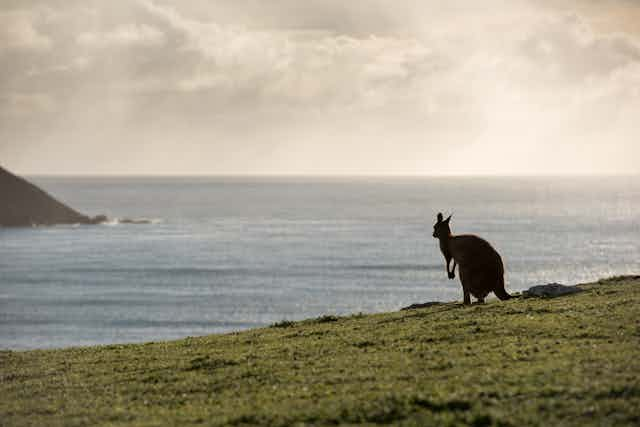Today a new paper proposes trapdoor spiders arrived on Kangaroo Island, South Australia, after drifting across the sea from Africa.
Molecular analyses of spiders from Kangaroo Island, other parts of Australia, and Africa show that the Kangaroo Island’s spiders are much more closely related to African species than to other Australian ones. Rough dating of divergences – that is, how long ago different species or groups split apart – suggests that the Kangaroo Island spiders were separated from African relatives long after the breakup of Gondwana (the southern supercontinent), but arrived on Kangaroo Island at least a couple of million years ago (well before humans).
The authors conclude that the spiders must have come to Australia by crossing the Indian Ocean.
So can a spider travel over thousands of kilometres of open ocean? Sure!
There is a lot of evidence that plants and animals can reach new lands by travelling long distances. This usually happens either by drifting across oceans (for example by “rafting” – hitching a ride on floating objects such as uprooted trees or seaweed clumps) or via air travel (blown by strong winds or carried by birds). The evidence has mostly come from genetic studies like the new spider study.
Read more: Antarctica may not be as isolated as we thought, and that's a worry
When populations of species on either side of an ocean are genetically very similar, it is reasonable to conclude that there has been some recent movement between them. That’s because DNA changes over time: each time DNA is copied (which happens every time a new cell forms) there is a chance that copying errors will occur. If these errors – known as mutations – are not harmful, they can be copied into later generations. In this way, populations that are not interbreeding gradually drift apart genetically. The result is that populations that have been separated for a long time will be very distinct, whereas those that have been recently connected will be genetically similar.

Genetic and observational studies give us strong evidence that long-distance voyages have happened. It might seem incredible that a plant or animal could survive a long trip at sea, or be blown to a new land by a storm, but it only has to succeed every now and then for dispersal to play a big role in shaping global biodiversity.
For example:
Ferns probably reached the young Hawaiian islands as spores carried by strong winds. Some spiders are also thought to have blown over to the islands.
Many birds migrate long distances each year, and can carry barbed or sticky plant seeds attached to feathers or feet – this mechanism is thought to explain how many plant species reached remote islands.
A few years ago, seaweed swarming with living invertebrate animals washed up on a beach in southern New Zealand, and DNA tests of the kelp and the animals showed the voyagers had drifted in ocean currents from islands hundreds of kilometres away.
In the 1990s, just after a hurricane, iguanas were found sitting on driftwood on beaches on a Caribbean island that had never before had iguanas on it.
Many spiders can travel long distances through the air by “ballooning” – using fine silk threads like a kite or balloon, to catch rides with air currents.
Of course, many plants and animals have remained perched, sedately, on their tectonic plates as they slowly move around the world – not all species have crossed oceans.
Read more: How the warming world could turn many plants and animals into climate refugees
Nonetheless, we now know that intercontinental travel is not something that only those that can fly, swim or build canoes can do – and a good thing, too! Rapid environmental change will force many plants and animals to move to new places. Many species are moving toward the poles, or up mountains, as the climate warms.
The ability to travel is, and has always been, an important part of long-term survival and evolution. But it’s risky, too. Many long-distance trips fail, and the voyagers often perish before finding a new home. These intrepid trapdoor spiders just got very lucky!

